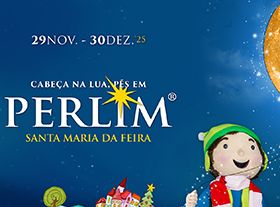Torre de Moncorvo
Torre de Moncorvo
Towns and Villages
The name of this town is linked to that of a Leonese noble, Mendo Curvus, the lord of this region, who, after taking part in the Christian Reconquest of the Iberian Peninsula, ordered a castle to be built both as his residence and for the defence of the territory. D. Afonso Henriques, the first king of Portugal, confirmed the privileges that had previously been given to the inhabitants, by granting the settlement charters in 1128 and 1140.
A century later, Torre de Moncorvo gained renewed importance when it was promoted to the status of a town, at the initiative of the king D. Dinis. During this same reign, the castle was rebuilt and the town´s walls strengthened, confirming its importance during the Middle Ages as an advanced point of defence along the Portuguese border.
In 1512, D. Manuel granted Torre de Moncorvo a new charter, which thus became one of the largest administrative districts in the country. S
ituated in the fertile Vale da Vilariça, close to the Serra do Reboredo, the town became an important trading centre between the territories to the north of the River Douro and the wine region of Beira Alta. The wealth of this region was reflected in the building of two important churches: the imposing parish church of Torre de Moncorvo, known as the Igreja Matriz de Nossa Senhora da Assunção, and the Renaissance Igreja da Misericórdia.
In the 17th century, the Real Feitoria dos Linhos e Cânhamos (Royal Linen and Hemp Factory) was created at the initiative of the king, D. João IV.
During the 18th century, the use of silk began to spread and gradually the breeding of silkworms replaced the growing of flax, providing continuity for the region´s textile production. Another area of great investment was mining, an activity which began in 1874 due to the fact that one of the country´s largest deposits of iron ore was to be found in the region. The present-day Museu do Ferro e da Região de Moncorvo (Moncorvo Regional and Iron Museum) reminds us of the way in which this industry developed and provides a great deal of interesting information about the local history and customs.
One of the best times to visit Torre de Moncorvo is at the end of winter, when the Municipal Council organises a handicraft fair and promotes the region through its special initiative known as "Amendoeiras em Flor" (Almond-trees in Blossom).
You should also make sure to visit Adeganha, a village some 19 kilometres from Torre de Moncorvo, which still preserves many of the typical rural characteristics of the region of Trás-os-Montes. Here, you should take time to visit the Igreja Matriz de Santiago Maior, an interesting example of the Romanesque architectural style in north-east Portugal.
A century later, Torre de Moncorvo gained renewed importance when it was promoted to the status of a town, at the initiative of the king D. Dinis. During this same reign, the castle was rebuilt and the town´s walls strengthened, confirming its importance during the Middle Ages as an advanced point of defence along the Portuguese border.
In 1512, D. Manuel granted Torre de Moncorvo a new charter, which thus became one of the largest administrative districts in the country. S
ituated in the fertile Vale da Vilariça, close to the Serra do Reboredo, the town became an important trading centre between the territories to the north of the River Douro and the wine region of Beira Alta. The wealth of this region was reflected in the building of two important churches: the imposing parish church of Torre de Moncorvo, known as the Igreja Matriz de Nossa Senhora da Assunção, and the Renaissance Igreja da Misericórdia.
In the 17th century, the Real Feitoria dos Linhos e Cânhamos (Royal Linen and Hemp Factory) was created at the initiative of the king, D. João IV.
During the 18th century, the use of silk began to spread and gradually the breeding of silkworms replaced the growing of flax, providing continuity for the region´s textile production. Another area of great investment was mining, an activity which began in 1874 due to the fact that one of the country´s largest deposits of iron ore was to be found in the region. The present-day Museu do Ferro e da Região de Moncorvo (Moncorvo Regional and Iron Museum) reminds us of the way in which this industry developed and provides a great deal of interesting information about the local history and customs.
One of the best times to visit Torre de Moncorvo is at the end of winter, when the Municipal Council organises a handicraft fair and promotes the region through its special initiative known as "Amendoeiras em Flor" (Almond-trees in Blossom).
You should also make sure to visit Adeganha, a village some 19 kilometres from Torre de Moncorvo, which still preserves many of the typical rural characteristics of the region of Trás-os-Montes. Here, you should take time to visit the Igreja Matriz de Santiago Maior, an interesting example of the Romanesque architectural style in north-east Portugal.




 Explore
Explore 
 Remember and Share
Remember and Share 


